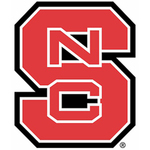Virginia Tech
Profile
Size
10 / 10Cost
5 / 10Selectivity
3 / 10-
Team Conference
MCLA Div. 1
-
College Type
4-year, Public
-
Campus Type

City: Small
Student Body
Gender
- Male
- Female
Enrollment
- Full Time
- Part Time
Geography
- In-State
- Out-of-state
- Foreign
- Other
Ethnicity
- White
- Black
- Asian
- Latino
- Foreign
- Other
Other includes American Indian, Native Alaskan, Native Hawaiian or other Pacific Islander, two or more races and unknown race / ethnicity.
Coach Recruiting Interview
Virginia Tech was crowned the SELC champions this year, after defeating the resurgent Liberty University Flames in a 13-9 match. The Hokies went 15-4 under their first year head coach and Maryland native Matthew Schroeder, while three players received SELC 1st Team All-Conference honors. VT shocked the MCLA with a first round upset over BYU in the national tournament, 11-6. The SELC champs are adding a great recruiting class of incoming freshman and transfers next year as they look to bring a national title to Blacksburg.
What positive surprises did you see from your team this season
We really came together as a group this year. As my first season as head coach, I wasn’t sure how the upperclassmen would take a lot of the changes I made. However, they were able to find common ground and really bring us closer together as a team. They are a big part of the reason we were successful this season.
How did your season stack up against your expectations going into the season?
We always have high hopes going into season. Winning the SELC is always a huge accomplishment and certainly one of our goals every year. We wanted to do something that no other Tech team has ever done and for the most part, we accomplished that. Going to the second round of nationals against great competition is something we are all proud of, but we feel short of our ultimate goal. We have to continue to get better during the offseason and the fall and be ready for another hopefully strong year.
Where did your team improve the most during the season and which player’s took a step forward in their game?
As the season moved forward, we were more consistent on the offensive and defensive end. I also thought our ground ball play helped us win a lot of close games. I was really impressed the way Bryan Cooper stepped up and helped us win her SELC tournament and beat a very good BYU team. He will be counted on for the next few years to anchor our defense.
Where can next year’s team improve in order to reach your ultimate goal for the season?
I’m not sure there is one area that really needs to be improved on in particular, but we need go continue to work hard and get better each day. The MCLA is loaded with talent and great players and we have to continue to work hard to fight for a national championship.
Which incoming players are you most excited about and how do they fit with the type of team you are building?
We have a great recruiting class coming next year. They are all very excited to build on what we accomplished this year and are eager to be in Blacksburg. We also have a few transfers that could immediately fill some voids from our graduating seniors. Each of our recruits are hard working student athletes that are coachable and eager to keep building the program. They are all great fits for our program.
Team Road Trips
Most road games for Virginia Tech are scheduled for the Virginia, Tennessee, West Virginia, and Kentucky areas against teams including Liberty, Tennessee, West Virginia, and University of Kentucky. The team has also traveled to Boulder, Colorado to play the University of Colorado at Kittredge Field. Other trips have included Bel Air, Maryland and Irvine, California.
Recruit Commits
2021 | |||
Hometown |
Position(s) | ||
| Evan Niewoehner |

|
Sewell, NJ | Mid, Mid |
Location
Team Videos
Where Grads Live
- Washington D.C. Metro Area
- Roanoke Virginia Area
- Richmond Virginia Area
- Norfolk Virginia Area
- Greater New York City Area
- Baltimore Maryland Area
- Raleigh-Durham North Carolina Area
- San Francisco Bay Area
- Charlotte North Carolina Area
- Greater Philadelphia Area
- Greater Atlanta Area
- Charlottesville Virginia Area
- Greater Boston Area
- Greater Denver Area
- Greater Los Angeles Area
Where Grads Work
- Booz Allen Hamilton
- IBM
- US Army
- Capital One
- Lockheed Martin
- Northrop Grumman Corporation
- Deloitte
- US Navy
- Accenture
- Fairfax County Public Schools
- Microsoft
- Wells Fargo
- Boeing
- Cisco
- United States Air Force
What Grads Do
- Engineering
- Operations
- Education
- Research
- Sales
- Information Technology
- Entrepreneurship
- Program and Project Management
- Consulting
- Finance
- Arts and Design
- Marketing
- Media and Communication
- Healthcare Services
- Support
Niche Grades
Overall Experience

Student Life

Professor Rating

Academics

Athletics

Campus

Academics
Test Scores
This range represents the middle half of incoming freshman from the 25th to 75th percentile. The writing component is now optional and no longer reported. Historical writing ranges: 530 - 640 for SAT
This distribution represents incoming freshman test scores and GPA on 4.0 scale.
Admissions
Total |
Male | Female | |
| Applicants | 31,974 | 18,859 | 13,115 |
| % Admitted | 70% | 67% | 75% |
| % Admits That Enroll | 34% | 34% | 34% |
| Incoming Freshman Average GPA | 3.64 |
Admission Considerations
Required | Rec. | |
|---|---|---|
| High School GPA | ||
| High School Rank | ||
| High School Transcript | ||
| College Prep Classes | ||
| Recommendations | ||
| Demonstrate Competencies | ||
| Admission Test Scores | ||
| Other Tests (Wonderlic, etc.) | ||
| TOEFL (English proficiency) |
 Admissions office
Admissions office
Majors / Programs
Degrees offered by popularity. Type = Bachelor.
 Athlete graduation rate
Athlete graduation rate
Financial
Net Price
Average net price = sticker price - financial aid.
$18,449
Average net price by income for incoming freshman receiving financial aid.
Net price for students paying in-state tuition rate (public institutions).
Sticker Price
Sticker price = estimated total cost of attendance.
In-state | Out-of-state | |
On Campus | ||
| Tuition & Fees | $13,691 | $29,975 |
| Books & Supplies | $1,100 | $1,100 |
| Cost of Living | $9,342 | $9,342 |
| Personal Expenses | $3,150 | $3,150 |
| Sticker Price | $27,283 | $42,885 |
Personal expenses includes laundry, transportation, entertainment and furnishings.
Financial Aid
65% of full-time, incoming freshman receive financial aid.
Receiving Aid % | Avg. Aid Amount | |
Type of Aid | ||
| Grant or Scholarship | 41% | $8,849 |
| Federal Grants | 16% | $6,653 |
| Pell Grants | 15% | $4,729 |
| Other Federal | 7% | $5,414 |
| State & Local Grants | 13% | $5,022 |
| Institutional Grants | 36% | $5,405 |
| Student Loans | 42% | $8,785 |
| Federal Loans | 41% | $5,292 |
| Other Loans | 9% | $18,197 |
All financials shown for full-time, incoming freshman.
Total Amount | Per Student | |
Endowment | ||
| Financial Assets | $1.14 Billion | $32,780 |
Value of endowment assets at fiscal year end.
Debt
Total federal debt after graduation for undergrad borrowers: $23,250.
Total cumulative student debt by percentile.
Total Principal | Monthly Payment | |
| 10 Year Repayment | $21,110 | $247 |
Most student loans have a grace period before repayment begins.
3 Year Avg. Default Rate: 1.7%
Avg. rate for colleges with lacrosse is 5.1%.
Total federal debt excludes private student loans and parent PLUS loans. Cumulative debt cohort includes 7,159 students.
Salary
Earnings 10 years after enrollment: $62,500
Earnings of former students working by percentile.
Earnings of former students who received federal financial aid. Figures shown are median.
Payback
How long until this college investment pays off: 3.94 years.
Median debt and foregone earnings divided by median earnings. Foregone earnings assumes 4 years to graduation; at this school, 65% of students graduate on time.
Team Social
Campus Safety
On Campus |
In Res. Halls |
|
|---|---|---|
Criminal Offenses |
||
| Murder | - | - |
| Negligent Manslaughter | - | - |
| Rape | 15 | 13 |
| Fondling | 5 | 4 |
| Incest | - | - |
| Statutory Rape | - | - |
| Robbery | - | - |
| Aggravated Assault | 4 | 4 |
| Burglary | 26 | 24 |
| Motor Vehicle Theft | 3 | 2 |
| Arson | 1 | 1 |
In Residence Halls are a subset of On Campus statistics. Murder includes non-negligent manslaughter.
The crime data reported by the institutions have not been subjected to independent verification by the U.S. Department of Education. Therefore, the Department cannot vouch for the accuracy of the data reported here. Statistics represent 3-year average data.
Data from The National Center for Education Statistics (NCES), the primary federal entity for collecting and analyzing data related to education.
Carnegie Classifications
Category |
Classification |
|---|---|
| Basic Classification | Doctoral Universities: Highest Research Activity |
| Undergrad Instruction | Professions plus arts & sciences, high graduate coexistence |
| Graduate Instruction | Research Doctoral: Comprehensive programs, with medical/veterinary school |
| Enrollment Profile | High undergraduate |
| Undergrad Profile | Four-year, full-time, more selective, lower transfer-in |
| Size and Setting | Four-year, large, primarily residential |
Carnegie classifications provide a framework for evaluating comparable schools.
Similar Academic Schools
-

-

-

-

-

-

-

-

-

-

-

-

-

-

-

-

-

-

-

-

-

-

-

-

-

 See more college grades
See more college grades Free ACT and SAT test prep
Free ACT and SAT test prep Free SAT test prep
Free SAT test prep Free scholarship search
Free scholarship search